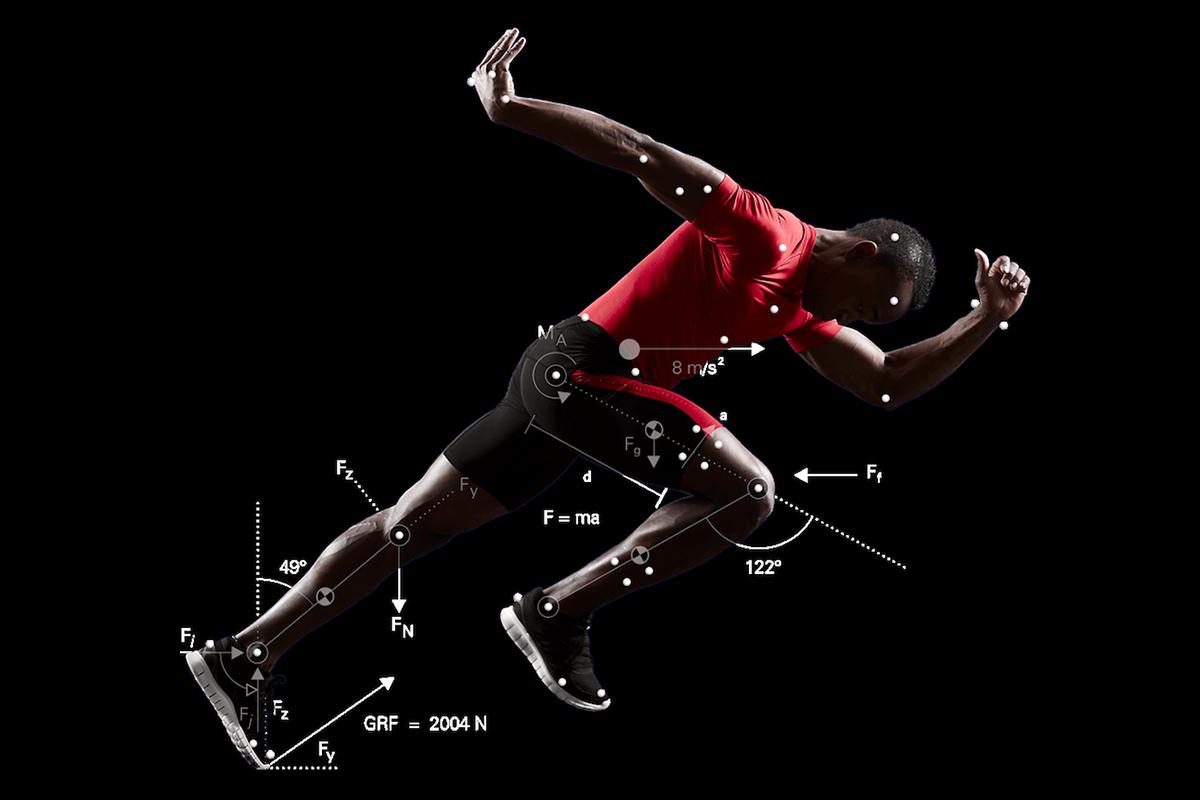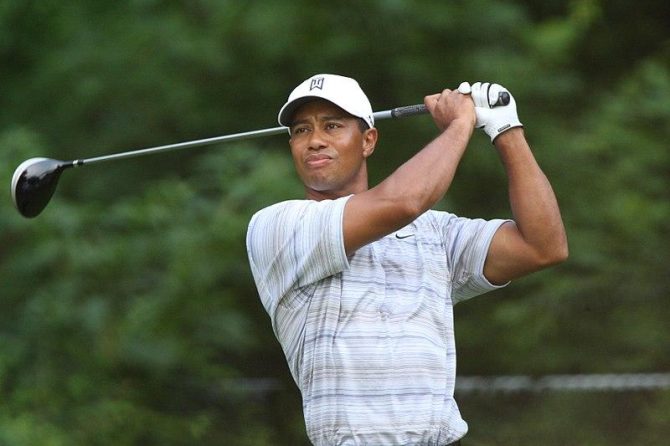Biomechanical analysis of the golf swing is crucial for optimizing performance, reducing risk of injury, and personalizing coaching strategies. While conventional approaches often focus on external kinematics, a comprehensive understanding requires delving into the anatomical underpinnings of the movement.
This article presents a detailed biomechanical analysis of the golf swing from an anatomical perspective. It systematically examines the involvement of major muscle groups, skeletal structures, and joint kinematics throughout the entire swing sequence.
By integrating anatomical knowledge with biomechanical principles, this analysis provides a deeper understanding of the interplay between the musculoskeletal system and the golf swing. This approach empowers practitioners to develop evidence-based interventions that enhance swing mechanics, improve performance, and safeguard golfer health.
Biomechanical Analysis of the Golf Swing: An Anatomical Approach
This detailed study on golf swing incorporates a thorough assessment of the intricate interplay between anatomy, biomechanics, and the art of golf. By dissecting the movements with an anatomical lens, we aim to illuminate the swing’s complexities and facilitate deeper insights into maximizing performance.
To begin, we delve into the anatomical structures central to the golf swing, focusing on the muscles, joints, and bones that orchestrate the seamless flow of movement. Each component’s role in generating power, control, and accuracy is meticulously analyzed, providing a granular understanding of the mechanics underlying the golf strike. This approach enables golfers to pinpoint areas for improvement and tailor their practice regimens accordingly.
Furthermore, the study employs sophisticated biomechanical techniques to quantify and analyze the swing’s kinematics and kinetics. High-speed cameras capture the intricate movements of the body during the swing, while force plates measure the ground reaction forces generated by each foot. This combination of data enables us to identify optimal swing parameters, such as clubhead speed, swing arc, and joint angles. By understanding these biomechanical principles, golfers can fine-tune their swings to achieve greater distance, consistency, and precision.
| Anatomical Aspect | Biomechanical Role in Golf Swing |
|—|—|
| Pelvis | Provides stability and initiates rotational movement |
| Hamstrings | Power muscles for the backswing |
| Glutes | Major power generators for downswing |
| Spine | Allows for flexibility and range of motion |
| Forearms | Control clubface angle and shot trajectory |
Kinematic and Kinetic Factors in Golf Swing Mechanics
Understanding the intricate interplay between kinematics and kinetics is crucial in optimizing golf swing performance. Kinematics refers to the motion of segments without considering forces, while kinetics explores the forces responsible for these motions.
The downswing is a complex sequence, comprising a rapid clubhead acceleration driven by leg drive and trunk rotation. The ‘X’-factor, a key kinematic parameter, measures the wrist-club separation during the downswing. A larger ‘X’-factor facilitates clubhead speed generation. Ground reaction force (GRF), a kinetic parameter, quantifies the force exerted by the golfer’s feet on the ground. Optimal GRF distribution promotes stability and power generation.
Proper coordination between kinematic and kinetic components is essential. A smooth transition from the backswing to the downswing, characterized by a sequential activation of muscles, ensures efficient power transfer. For instance, the latissimus dorsi initiates the backswing, while the pectoralis major and triceps brachii drive the downswing. Understanding these interactions enables golfers to fine-tune their technique and maximize swing efficiency.
Anatomical Structures Involved in Swing Propulsion and Stability
:
The golf swing is a complex motion involving a coordinated effort of various anatomical structures. The musculoskeletal system, including muscles, joints, and connective tissues, plays a crucial role in generating swing power and maintaining stability.
Muscles Involved in Swing Propulsion:
Deltoids (Anterior, Middle, and Posterior): Abduct and horizontally flex the arm, generating initial clubhead speed.
Pectoralis Major: Assists in horizontal adduction and medial rotation of the arm, helping to initiate the downswing.
Latissimus Dorsi: Extends the arm and rotates it medially, providing power at the end of the downswing.
Triceps Brachii (Long, Lateral, and Medial Heads): Extends the elbow, contributing to clubhead acceleration through impact.
Forearm Flexors and Extensors: Pronate and supinate the wrist, controlling clubhead orientation during the swing.
Stability Structures:
Spine: Provides structural support and flexibility, allowing for spinal rotation and trunk stability.
Hip Flexors (Iliacus and Psoas Major): Flex the hip, influencing pelvic tilt and swing plane.
Abdominal Muscles: Stabilize the torso and transfer force from the lower body to the upper body.
Gluteus Maximus: Extends and externally rotates the hip, providing power and stability during the follow-through.
Hamstrings (Biceps Femoris, Semitendinosus, and Semimembranosus): Flex the knee and assist in hip extension, contributing to swing rhythm and momentum.
| Structure | Function |
|---|---|
| Deltoids | Abduction and horizontal flexion of the arm |
| Triceps Brachii | Elbow extension |
| Hip Flexors | Hip flexion |
| Spine | Structural support and flexibility |
| Gluteus Maximus | Hip extension and external rotation |
Influence of Joint Mobility and Muscle Strength on Swing Efficiency
Joint mobility and muscle strength are vital components of efficient golf swings. Joint mobility allows for a wider range of motion within the joints, while increased strength translates to efficient force generation and control throughout the various phases of the swing.
Inadequate joint mobility can lead to compensations, decreased clubhead velocity, and limited power generation. For instance, restricted hip and thoracic spine mobility reduces the ability to achieve the optimal backswing position, impacting accuracy and drive distance. Similarly, weak hip and core muscles hinder the downswing’s rapid rotation and impact on the ball.
To enhance swing efficiency, golfers should focus on improving joint mobility and muscle strength through targeted exercises and flexibility routines. Warming up before playing, working with a qualified golf instructor, and incorporating specialized exercises can help optimize joint range of motion, flexibility, and muscle strength, fostering a more powerful and efficient golf swing.
| Joint Mobility and Muscle Strength Influence on Swing Efficiency | Example Exercises |
|—|—|
| Hip mobility | Squats, hip flexor stretches, dynamic lunges |
| Thoracic spine mobility | Rotary stability exercises, thoracic extensions, foam rolling |
| Shoulder and arm strength | Resistance bands, rotator cuff exercises, arm bike |
| Core strength | Planks, sit-ups, Russian twists, bridge exercises |
Corrective Exercises and Training Recommendations for Improved Swing Biomechanics
To improve swing biomechanics, corrective exercises targeting specific muscle groups can be implemented. These exercises aim to strengthen, improve flexibility, and enhance coordination within the kinetic chain.
Exercises for the Upper Body
– Lateral raises: Focuses on strengthening the shoulders to provide stability and control during the backswing.
– Rotator cuff exercises: Include movements such as external and internal rotations with resistance bands to enhance shoulder stability and prevent injuries.
– Wall slides with resistance bands: Improves shoulder flexion and scapular control, which is crucial for the downswing.
Exercises for the Core and Lower Body
– Planks and side planks: Strengthens the core and stabilizes the spine, creating a solid foundation for the swing.
– Hip and glute exercises: Improve hip mobility, power, and stability, essential for generating force in the downswing.
– Leg extension exercises: Strengthen the quadriceps and improve knee mobility, ensuring efficient ground reaction force.
Training Recommendations
To optimize swing biomechanics, consider the following training recommendations:
– Gradual Progression: Gradually increase exercise intensity and duration to avoid muscle imbalances and injuries.
– Functional Movements: Include exercises that mimic the movements of the golf swing, enhancing neural adaptations and improving swing efficiency.
– Flexibility and Stabilization: Incorporate regular stretching and mobility drills to enhance range of motion and prevent movement restrictions.
| Exercise | Targeted Muscle Group | Benefits |
|—|—|—|
| Lateral Raises | Shoulders | Stability and control during the backswing |
| Rotator Cuff Exercises | Shoulders | Shoulder stability and injury prevention |
| Planks | Core | Core strength and spinal stability |
Biofeedback and Performance Enhancement through Motion Capture Analysis
Motion capture analysis is a powerful tool for improving athletic performance and rehabilitating injuries. By recording and analyzing movements with high-precision sensors, biofeedback systems provide athletes with valuable insights into their biomechanics. This data can then be used to identify areas for improvement and develop targeted training programs.
Biofeedback has been shown to improve performance in a variety of sports, including golf. By analyzing the swing using motion capture, golfers can identify potential flaws in swing mechanics. These flaws can then be corrected through targeted drills and exercises designed to improve flexibility, strength, and coordination.
Furthermore, biofeedback can enhance performance by providing athletes with a better understanding of their biomechanics. This awareness allows them to make more conscious and controlled movements, leading to improved efficiency and consistency. By identifying and addressing underlying biomechanical issues, motion capture analysis can help golfers optimize their performance and prevent injuries.
the biomechanical analysis of the golf swing presented in this article offers a comprehensive understanding of the anatomical intricacies involved in this complex sport. The detailed anatomical descriptions and biomechanical principles provide a valuable resource for researchers, coaches, and athletes seeking to optimize performance and minimize the risk of injury. By integrating this biomechanical knowledge into the teaching and practice of golf, we can enhance the overall experience and strive for excellence in the sport.





